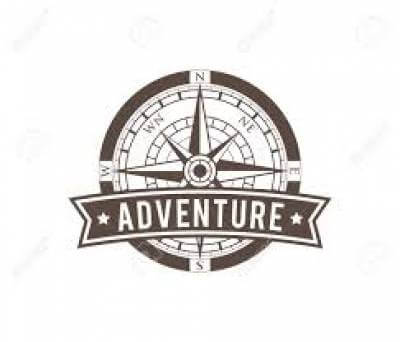KANCHENJUNGA EXPEDITION
A sacred quest and expedition for hidden treasures to the aptly named Mt. Kanchenjunga (8586m/ 28,170ft) – meaning "The Five Treasures of the Great Snows", located in the Kanchenjunga Himal bordered by the Tamur River in the west, Lhonak Chu and Jongsang La Pass (6145m) in the north, and the Teesta River in Sikkim, India in the east.
The ‘Five Treasures refer to the five peaks” Kanchenjunga I (8586m), Kanchenjunga West (8505m), Kanchenjunga South (8494m), Central (8482m) and Kangbachen (7902m).Three of the five peaks that make up Kanchenjunga Himal, Kanchenjunga 1, Central (8482m) and South (8494m) are on the border, while the West (8505m) and Kangbachen (7902m) are in Nepal. Kanchenjunga is also India’s highest peak and is close to the eastern border of Nepal and situated in the Kanchenjunga Conservation Area. Kanchenjunga is the third highest mountain in the world derived from the Tibetan word 'Kanchen' and 'Dzonga'. The five treasures of God referred to are: salt, gold, turquoise and precious stones, sacred scriptures, invincible armor or ammunition, grain, and medicine. The local Lhopo people believe that the treasures are hidden but will be revealed to the devout when the world is in peril.
The reason the Kanchenjunga Expedition is for serious climbers is that it is prone to snowstorms and avalanches and requires experience in all aspects of high altitude ascents. This is a challenging climb that will test your skills and endurance – especially so at this high altitude. With three peaks over 8000m and 11 over 7000m, you can anticipate a feast for the eyes of pristine whiteness. The route to the summit is via the south face. It is a technical ascent over rock and ice with the final 1500m a pretty straight forward climb up to the summit.
Five glaciers drain from the Kanchenjunga Massif: Zemu, Kanchenjunga, Yalung, Talung and the Ramtang glacier add to the amazing topography of this mountain range as they drain down to form several stunning rivers, the Sapta Koshi River (792km in length) in Nepal that eventually flows into the Ganges River, and the Teesta River in India (315km in length) that makes its way through India to the Bay of Bengal in Bangladesh.
Adequate time to acclimatize is the key to any serious climbing expedition -, especially at these extreme altitudes. There will be many climbs up and back to base camps that will ensure you are safely acclimatized before your assault on the summit.
Sherpa Expedition and Trekking’s Sherpa guides (well known for their climbing skills) will do everything within their power to lead you safely to the summit. Our guides are government certified and experienced climbers. We take no chances with your well-being and hence have allowed several days to make up for unforeseen circumstances, such as adjusting to higher altitudes and the possibility of altitude sickness.
Sherpa Expedition & Trekking has more than 40 years in the trekking and climbing business. We have an unparalleled reputation in providing logistical support and excellent client service.
ITINERARY
Day 1 : Arrival in Kathmandu and Hotel transfer
Day 2 : Day 02-03: Preparation, Briefings, last minute shopping and permit formalities
Day 3 - 4 : Fly to Bhadrapur; Drive to Ilam Bazaar, Lodge.
Day 5 : Drive to Jorpul (9-10 Hrs.) via Phidim, Lodge.
Day 6 : Trek to Khebang (1740m-5 Hrs.), Lodge.
Day 7 : Trek to Yamphudin (2070m-7 Hrs.), Lodge.
Day 8 : Trek to Torongdin (2995m-11 Hrs.), Lodge
Day 9 : Trek to Tseram (3870m-4 Hrs.), Lodge.
Day 10 : Rest & Acclimatization in Tseram, lodge.
Day 11 : Trek to Ramche (4620m-5 Hrs.), Camping.
Day 12 : Trek to Middle Camp (4900m-7 Hrs.), Camping.
Day 13 : Trek Kanchenjunga Base camp; establish Advance Base Camp.
Day 14 : Days 14-46: Climbing period; summit Kanchenjunga (8586m).
Day 15 - 47 : Preparation to return to Kathmandu; Cleanup the Base Camp.
Day 48 : Trek to Ramche (4620m-9 Hrs.), Lodge/Camping.
Day 49 : Trek to Torongdin (2995m-7 Hrs.), Lodge.
Day 50 : Trek to Yamphudin (2070m-9 Hrs.), Lodge.
Day 51 : Drive to Jorpul (9-10 Hrs.) via Khebang, Lodge
Day 52 : Drive to Birtamod, Jhapa, Lodge.
Day 53 : Fly/Drive to Kathmandu, transfer to Hotel.
Day 54 : Leisure and shopping, farewell-celebration dinner in the evening.
Day 55 : Transfer to the airport for final departure
SERVICES
Full Board Service Includes
- Arrival and departure transfer services to and from both domestic and international flights as per itinerary.
- Assistance at the International airport by Sherpa Expedition and Trekking while arriving and departing in Kathmandu.
- 4 Nights Yak and Yeti or similar hotel accommodation in Kathmandu on B/B basis.
- Experienced and government licensed high altitude trekking guide during the trekking and climbing period.
- Private Bus or Jeep Transportation from Kathmandu-Teplejung (Khamdani)-Kathmandu sector to all climbing members, Sherpa guide, liaison officer and kitchen staff.
- All trekking and mountaineering equipment: Kitchen tent, store tent, dining tent, toilet tents, tables, chairs, and cooking utensils for advance Base Camp and camp two.
- Common climbing equipment (necessary fixed and main rope, ice bars, ice screws, snow bar etc)
- Services of chef and kitchen assistant at base camp.
- 3 meals a day: Breakfasts, lunch, and dinner with tea/coffee)available at the tea house/hotel/lodge during the trekking period.
- 3 fresh meals a day: Breakfast, lunch, and dinner will be served at advanced base camp.
- All food and fuel for base camp and higher camps during the expedition for both clients and staff.
- 50kg baggage allowance per person during the trekking period. This will be carried by porters.
- Daily weather report services from Seattle, Washington based company.
- Trekking Permit (Kanchenjunga National Park entry fee)
- TIMS card (Trekking Information Management System).
- Expedition Royalty and climbing permit of Nepal Government to climb Mt. Kanchenjunga (8586M).
- Nepalese Government Royalty and fees.
- One experienced, trained, government licensed and 3x Kanchenjunga Submitter climbing/expedition Guide (Sherpa) per client.
- All wages, equipment, medical and accidental Insurances for all involved staff during the trekking and expedition period.
- Equipment allowances and wages for climbing Sherpa's, chefs, kitchen assistants.
- Equipment allowances and wages for government liaison officer.
- First aid medical kits for the group and the staff.
- Satellite phone carrying by guide for communication and available for members with the cost of $3USD per minute.
- Appropriate food for high altitude and all climbing crew at base camp and above as required.
- Required fixed and dynamic rope during the climbing period.
- The heater will be provided at base camp for heating the dining room.
- Emergency oxygen, mask, and regulator provided on the requirement of guests with appropriate charge.
- Each expedition member will have an individual tent available in the ABC.
- Solar panel for light and battery charging.
- All tents for camps 1, 2, 3 and 4 for members and staff.
- Icefall charges by SPCC.
- Gamow Bags (Portable Altitude Chamber).
- 5 Bottles (28L) of Poisk Oxygen will be provided to each member (we use Poisk brands of the Oxygen).
- The latest model of Summit or Top out system mask and regulators.
- Sherpas tents, food for climbing, and insurance for staff.
- Helicopter rescue insurance for high altitude climbing Sherpa guide, cook and staff.
- Free assistance service for cargo clearance and duties.
- Fresh cooked food and kitchen will be provided at camp II.
- Trekking and climbing map of the Mount Kanchenjunga region.
- EPI Cooking gas, the stove will be provided in camps one, three and south col for cooking food, boiling water.
- The generator will be providing for back-up lighting power and charging electronic equipment.
- Transportation of food supply to base camp from Kathmandu (Cargo to Lukla and then by porter/Yaks to base camp).
- Our service charge and government taxes levied in Nepal.
- Complete pre-departure information.
- Flight ticket reconfirmation
- Visa extension procedure services (if necessary).
- Farewell dinner in a typical Nepali restaurant with a domestic culture show in Kathmandu.
- Sherpa ExpeditionT-shirt/Pashmina, brochure.
Full board service Excludes
- Lunch and dinner during your stay in Kathmandu (except for the farewell dinner).
- Any packed food/snacks, aerated drinks, energy drinks, mineral water, alcohol, cigarettes, chocolates, nutria-bars during the trekking.
- Items of personal nature, laundry expenses, tips.
- Any extra expenses arising out of various/unforeseen situations like natural calamities, landslides, political disturbances, strikes, changes in government regulations, etc.
- Extra transportation then displayed in the itinerary program.
- Any additional staff other than specified.
- Rescue, repatriation, medicines, medical tests and hospitalization expenses.
- Medical Insurance and emergency rescue evacuation if required.
- Travel insurance and helicopter rescue.
- Walkie-talkies
- Filming permit.
- Personal climbing gears.
- Expenses incurred towards usage of landlines, mobiles, walkie-talkies, satellite phone and internet expenses
- Clothing, packing items or bags, personal medical kit, camera/video fees or trekking gear.
- Nepal custom duty for import of expedition goods.
- Summit bonus for climbing Sherpa Guides as per Mountaineering Association rules. Minimum $1000.00USD per climbing Sherpa guide.
- Tips and gifts for base camp and high altitude trekking and climbing staff.
- Airfare of international flights.
- Nepal entry visa fee (easy to obtain the visa on arrival at Tribhuvan International Airport – Kathmandu). $30 USD for 15-day, $50 USD for 30 Days, and $125 USD for 90 Days visa.
- Any extra services or products or offers or activities which are not mentioned in the itinerary.
- Any other item not included in the Cost Includ
EQUIPMENTS
Travel Documents
- Valid Passport
- Credit Cards
- Pp Size Photo (4 Pieces)
- Insurance Paper And Contact Address.
- Family Members / Company’s Contact Address
Foot Wear
- Kailas / Lasportiva / Millet (Summit Shoe)
- Normal Socks (5-6 Pairs)
- Summit Socks (2 Pairs)
- Trekking Shoes (1 Pair)
- Camp Booties (1 Pair)
- Basecamp Slipper (1 Pair)
Upper Body
- Light Weight Top / Thermo Coat (2-3 Layers)
- Mid Weight Top (2-3 Layers)
- Heavy Weight Top (2 Layers)
- Fleece Jacket (1)
- Gore Text Jacket (1)
- Down Jacket (1)
- Wind Proof Jacket
- Cotton T-Shirt For Base Camp. (2-3)
Lower Body
- Light Weight Long Under Pants (2-3 Pairs)
- Under Wear (5-7 Pairs)
- Mid Weight Long Under Pants (2-3 Pairs)
- Heavy Weight Long Under Wear
- Gore Text Pant. (1)
- Down Pants. (1)
- Water Proof Pant. (1)
Head
- Sun Cap
- Desert Cap
- Balaclava
- Fleece Hat
- Neck Gaiter (2-3)
Hands
- Thin Fleece Gloves (2 Pairs)
- Wind Stopper Fleece Gloves
- Heavy Gloves (Mitten)
- Summit Gloves
Sleeping Bags
- Sleeping Bag - 20 Degree Celsius (For Base Camp)
- Down Sleeping Bag - 20 To -40 Degree Celsius (Extreme Comfort)
- Thermarest Mattress (Cell Foam)
- Thermarest Mattress (Inflatable)
Climbing Equipment
- Climbing Helmet
- Down Suit (Kailas / Marmot / Mountain
- Hardware / North Face / Millet )
- Crampons (Fit with Boot)
- Ice Axe
- Harness
- Atc Guide
- Jummer / Ascender
- Lock Carabiner (3)
- Unlock Carabiner (3)
- Tape Slings (2)
- Prusik Loops (1)
- Snow Goggle
- Head Light (4 Pairs Rechargeable Batteries Recommended)
- Satellite Phone
- Hand Warmer (If Possible)
Bag Packs
- Rucksacks 45L - 55L
- Duffle Bag 90 L -120 L (2 Pieces)
- Water Proof Stuff Sacks Large (2 Pieces)
- Water Proof Stuff Sacks Small (2 Pieces)
Sun Stuffs
- Banana Boat/ Nivea Sun Cream -50 (Spf)
- Lip Guard -20 / -50 (Spf)
- Sun Glasses (UV Protection)
- Glaciers Glasses (UV Protection)
Toiletries
- Hand Disinfectant
- Wet Tissue
- Toothpaste
- Toothbrush
- Soap
- Shampoo
- Garbage Bag
Eating & Drinking
- Water Bottle (2)
- Thermos
- Mug
- Spoon/ Fork
- Bowl
Medical
- Brufen / Ibuprofens
- Antibiotic
- Diamox
- Paracetamol
- Handy Plaster
- Crack Bandage
- Tincture Iodine
Miscellaneous
- Walking Stick
- Pocket Knife (Swiss)
- Umbrella / Rain Coat
GOOD TO KNOW
Here are some important things to know about a Kanchenjunga Expedition:
1. Location: Kanchenjunga is the third highest mountain in the world, located on the border of Nepal and India. The mountain has five main peaks, with the highest being Kanchenjunga Main, standing at 8,586 meters (28,169 feet).
2. Physical Fitness: Climbing Kanchenjunga requires excellent physical fitness. It is a demanding and challenging expedition that involves long days of trekking and climbing in high-altitude conditions. Prior experience in high-altitude mountaineering is highly recommended.
3. Climbing Experience: Prior experience in high-altitude mountaineering is essential for a Kanchenjunga Expedition. It is recommended to have successfully climbed peaks above 6,000 meters (19,685 feet) and have experience with technical climbing skills, including using crampons, ice axes, and ropes.
4. Permits: Climbing Kanchenjunga requires obtaining permits from the respective governments of Nepal and India. You will need a climbing permit from the Nepal Mountaineering Association (NMA) for the Nepalese side and a permit from the Indian Mountaineering Foundation (IMF) for the Indian side.
5. Climbing Season: The climbing season for Kanchenjunga is typically in the spring (April-May) and autumn (September-November). These seasons offer more stable weather, fewer storms, and better climbing conditions. It is advisable to plan your expedition during these times to increase your chances of success.
6. Route Options: There are several route options for climbing Kanchenjunga, including the North Ridge from the Nepalese side and the Yalung Face from the Indian side. These routes vary in difficulty and require different levels of technical expertise. Consult with experienced climbers and mountaineering agencies to determine the best route for your expedition.
7. Acclimatization: Proper acclimatization is crucial when climbing Kanchenjunga. It involves gradually ascending to higher altitudes, allowing your body to adapt to the reduced oxygen levels. This process helps minimize the risk of altitude sickness and improves your chances of reaching the summit. Acclimatization periods are built into the expedition schedule.
8. Sherpas and Guides: Hiring experienced Sherpas and guides is highly recommended for a successful Kanchenjunga Expedition. They provide crucial support, help with logistics, and ensure the safety of climbers. Working with a reputable mountaineering agency that can provide experienced Sherpas and guides is advisable.
9. Safety Considerations: Climbing Kanchenjunga involves inherent risks, including altitude sickness, avalanches, extreme weather conditions, and crevasses. It is essential to be aware of these risks and take necessary precautions. Following the guidance of experienced guides, using proper equipment, and being prepared for emergencies are essential for safety.
10. Environmental Responsibility: Kanchenjunga is a pristine and ecologically sensitive region. Climbers should practice responsible mountaineering and adhere to the principles of Leave No Trace. Respect the local culture and customs, dispose of waste responsibly, and minimize your impact on the environment.
Embarking on a Kanchenjunga Expedition is a significant undertaking that requires careful planning, preparation, and experience. Working with a reputable mountaineering agency and experienced guides is crucial for a safe and successful climb. Respect the mountain, embrace the challenge, and enjoy the incredible experience that climbing Kanchenjunga offers.
MAP
PHOTOS/Videos
Departures
Select a departure month
Fill out the form below and a Travel Expert will reach out to create your perfect tour.
FAQS
Can I climb Kanchenjunga without prior mountaineering experience?
No, climbing Kanchenjunga requires prior mountaineering experience. It is recommended to have successfully climbed peaks above 6,000 meters (19,685 feet) and have experience with technical climbing skills. This is a challenging expedition that should not be undertaken without the necessary skills and experience.
How long does it take to climb Kanchenjunga?
The duration of a Kanchenjunga Expedition can vary depending on several factors, including weather conditions, acclimatization schedule, and individual fitness levels. On average, it takes around 45-60 days for a complete expedition, including acclimatization periods and summit attempts.
What is the best time to climb Kanchenjunga?
The best time to climb Kanchenjunga is during the spring (April-May) and autumn (September-November) seasons. These seasons offer more stable weather, fewer storms, and better climbing conditions. It is advisable to plan your expedition during these times to increase your chances of success.
Are permits required to climb Kanchenjunga?
Yes, climbing Kanchenjunga requires obtaining permits from the respective governments of Nepal and India. You will need a climbing permit from the Nepal Mountaineering Association (NMA) for the Nepalese side and a permit from the Indian Mountaineering Foundation (IMF) for the Indian side. These permits need to be obtained in advance through authorized agencies.
How physically fit do I need to be to climb Kanchenjunga?
Climbing Kanchenjunga requires excellent physical fitness. It involves long days of trekking and climbing in high-altitude conditions. Prior training and conditioning, including cardiovascular exercises, strength training, and endurance building, are essential to prepare your body for the physical demands of the expedition.
Can I hire Sherpas or guides for a Kanchenjunga Expedition?
Yes, it is highly recommended to hire experienced Sherpas and guides for a Kanchenjunga Expedition. They provide crucial support, help with logistics, and ensure the safety of climbers. Working with a reputable mountaineering agency that can provide experienced Sherpas and guides is advisable.
Are there fixed ropes and camps along the route?
The availability of fixed ropes and camps can vary depending on the specific route and conditions. Some sections of the route may have fixed ropes in place, while others may require climbers to fix their own ropes. Camps are typically established at strategic points during the expedition to facilitate acclimatization and rest.
What are the safety considerations on a Kanchenjunga Expedition?
Climbing Kanchenjunga involves inherent risks, including altitude sickness, avalanches, extreme weather conditions, and crevasses. It is important to be aware of these risks, follow safety protocols, and have proper equipment and emergency plans in place. Working with experienced guides and following their instructions is crucial for safety.
Can I climb Kanchenjunga independently?
Climbing Kanchenjunga independently is highly discouraged due to the technical nature of the climb and the risks involved. It is strongly recommended to climb with a reputable mountaineering agency, experienced guides, and a well-equipped team to ensure safety and increase the chances of a successful summit.
What happens if I need to be rescued during the expedition?
In case of an emergency or need for rescue, it is important to have a contingency plan in place. Communication and evacuation protocols should be established with your mountaineering agency and guides. Helicopter rescue services are available in the region, but it is crucial to have appropriate insurance coverage for such situations.
Latest Traveller’s Reviews
Travel experiences of our clients who recently returned from their trips.
100%
Based On 2 Reviews
Lincoln Archie
United Kingdom
April 14, 2022
Exemplary Guides and Unparalleled Support
The guides on our Kanchenjunga expedition were exemplary, providing us with unparalleled support throughout the journey. Their expertise in navigating the challenging terrain, their knowledge of the mountain's intricacies, and their commitment to our safety and success made the expedition a truly remarkable and well-organized adventure.
Patience Lukeri
United Kingdom
August 19, 2021
A Majestic Climb to the Third Highest Peak
Our Kanchenjunga expedition was a majestic climb to the third-highest peak in the world. The sheer grandeur of the mountain, with its towering peaks and dramatic landscapes, provided us with a mountaineering experience that surpassed all expectations.
People Considering This Package Right Now Check availability


























